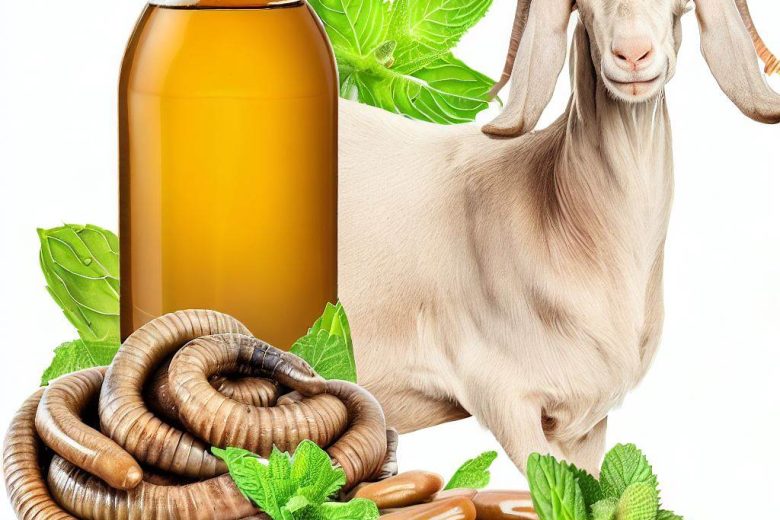Pig farming is a lucrative venture in Uganda, contributing significantly to the agricultural sector and providing a source of income for many farmers.
The success of pig farming relies heavily on proper nutrition, and formulating balanced pig feed is crucial for the overall health, growth, and productivity of the animals.
To formulate pig feed in Uganda, begin by determining the nutritional requirements of pigs at different stages of growth. Identify local feed ingredients such as maize, soybean meal, wheat bran, and fishmeal that can provide the necessary nutrients. Use a feed formulation software or consult with an animal nutritionist to create a balanced feed recipe by combining these ingredients in appropriate ratios, ensuring adequate protein, energy, vitamins, and minerals for optimal pig growth and health.
This article will provide a comprehensive guide on how to formulate pig feed in Uganda, considering the specific nutritional requirements of pigs and the availability of local feed ingredients.
How To Formulate Pig Feed In Uganda
Before formulating pig feed, it is essential to understand the nutritional requirements of pigs at different stages of growth.
Pigs require a balanced diet that consists of carbohydrates, proteins, fats, vitamins, minerals, and water. The nutrient requirements vary depending on the age, weight, and reproductive stage of the pigs.
To formulate pig feed, follow the step outlined and discussed below.
Step 1. Determine the Pig’s Nutritional Requirements
To begin formulating pig feed in Uganda, the first step is to consult a veterinarian or animal nutritionist who can provide you with accurate information on the nutritional requirements of pigs at different stages.
These professionals have the expertise to guide you in formulating a balanced and appropriate feed for your pigs.
When determining the nutritional requirements, consider the following factors:
- Pig’s Weight: The weight of the pig plays a crucial role in determining its nutritional needs. Younger pigs and those with lower weights will have different requirements compared to mature or heavier pigs.
- Age: Pigs have varying nutritional needs at different stages of their growth. Piglets have different requirements than growing or finishing pigs, and gestating or lactating sows have specific needs as well.
- Breed: Different pig breeds may have slightly different nutritional requirements. Factors such as growth rate, muscle development, and body composition can influence the nutritional needs of specific breeds.
- Reproductive Stage: For sows, their reproductive stage affects their nutritional requirements. Gestating sows have different needs than lactating sows, as they require specific nutrients to support the growth of their offspring.
- Purpose: Consider the purpose of raising pigs. Are they intended for meat production or breeding? Pigs raised for meat production will have different nutritional requirements than those raised for breeding purposes.
Step 2. Identify Local Feed Ingredients
In formulating pig feed in Uganda, it is important to utilize locally available feed ingredients.
This approach not only helps reduce costs but also ensures the sustainability of your pig farming enterprise.
Fortunately, Uganda has a range of common feed ingredients that can be incorporated into pig feed formulations. Here are some examples:
- Maize: Maize (corn) is a staple feed ingredient in pig diets. It is a good source of energy and can be obtained locally in Uganda. It can be used as a whole grain or ground into maize meal for inclusion in the feed.
- Sorghum and Millet: These grains are nutritious alternatives to maize and can serve as energy sources in pig feed. They are often readily available in Uganda and can be used in combination with other feed ingredients.
- Cassava and Sweet Potato: Cassava and sweet potato are starchy root crops that can be used as energy sources in pig feed. They are abundant in Uganda and can be processed into meal form for inclusion in the feed.
- Soybean Meal: Soybean meal is a high-quality protein source commonly used in pig feed. It provides essential amino acids for growth and muscle development. It can be sourced locally or through local suppliers.
- Sunflower Meal: Sunflower meal is a by-product of oil extraction from sunflower seeds. It is an excellent source of protein and can be included in pig feed formulations.
- Fish Meal: Fish meal is a highly digestible protein source that is rich in essential amino acids. It can be sourced locally or purchased from suppliers in Uganda. It provides a good balance of protein and amino acids in pig diets.
- Cottonseed Cake and Palm Kernel Cake: These oilseed cakes are rich in protein and can be included in pig feed formulations as a source of energy and protein. They are locally available in Uganda.
By identifying and utilizing these local feed ingredients, you can create a cost-effective and sustainable pig feed formulation.
It is essential to consider the availability, cost, and nutritional composition of these ingredients when formulating pig feed in Uganda.
Step 3. Calculate Feed Rations
Now that you have identified the local feed ingredients available in Uganda, the next step is to calculate the feed rations for your pigs.
This involves determining the proportion of each ingredient required in the feed ration based on the nutritional requirements of your pigs and the availability of ingredients.
Here’s how you can go about it:
- Nutritional Requirements: Refer back to the information provided by your veterinarian or animal nutritionist regarding the specific nutritional requirements of your pigs at different stages. Take into account their energy, protein, fiber, and mineral needs.
- Ingredient Availability: Consider the availability and accessibility of the feed ingredients you identified in Step 2. Take into account the quantities of each ingredient you have on hand or can easily obtain.
- Formulation Ratios: Based on the nutritional requirements and ingredient availability, you need to determine the appropriate ratios of ingredients in the feed formulation. Generally, a basic feed formulation for growing pigs may consist of 60-70% energy sources (grains like maize, sorghum, or millet), 20-30% protein sources (such as soybean meal or sunflower meal), and 5-10% mineral and vitamin supplements.
- Proportions and Adjustments: Calculate the amount of each ingredient needed to achieve the desired ratios in the feed formulation. Keep in mind that these proportions can be adjusted according to the specific nutritional needs of your pigs and the availability of ingredients.
- Balancing Nutrients: Ensure that the formulated feed provides the necessary balance of energy, protein, fiber, and minerals for optimal pig health and growth. Consider the nutrient content of each ingredient and make adjustments as needed to meet the required levels.
- Feed Formulation Software: Utilize feed formulation software or consult with an animal nutritionist to assist you in accurately calculating the feed rations. These tools can help you optimize the nutritional composition and cost-effectiveness of the feed formulation.
Step 4. Feed Formulation Ratios
When formulating pig feed in Uganda, it is important to establish the appropriate ratios of different components in the feed.
While the ratios may vary based on specific nutritional requirements and ingredient availability, a basic feed formulation for growing pigs typically follows these guidelines:
- Energy Sources (Grains): Allocate approximately 60-70% of the feed formulation to energy sources, primarily grains. Common grains used in pig feed include maize (corn), sorghum, and millet. These grains serve as the primary source of carbohydrates and provide energy for the pigs.
- Protein Sources (Oilseeds and Meals): Allocate around 20-30% of the feed formulation to protein sources. Oilseeds such as soybean, sunflower, and groundnuts, as well as protein-rich meals like soybean meal and sunflower meal, are commonly used in pig feed. These ingredients contribute essential amino acids necessary for growth and muscle development.
- Mineral and Vitamin Supplements: Reserve 5-10% of the feed formulation for mineral and vitamin supplements. Pigs require essential minerals and vitamins for proper metabolism, bone development, and overall health. Commercial premixes or individual mineral and vitamin supplements can be added to ensure the nutritional balance of the feed.
It is important to note that the specific ratios within these ranges may vary based on the nutritional requirements of your pigs and the availability of ingredients.
Factors such as the pig’s age, weight, breed, and purpose (meat production or breeding) should be considered when fine-tuning the formulation.
Step 5. Grinding and Mixing
Once you have determined the ratios of ingredients for your pig feed formulation in Uganda, the next step is to prepare the feed by grinding and mixing the ingredients.
This process ensures that the feed is easily digestible and that the nutrients are uniformly distributed.
#1. Grinding
Grind the ingredients to a suitable particle size. This step helps improve the digestibility of the feed by breaking down the ingredients into smaller particles that are easier for the pigs to consume and utilize.
Use a feed grinder or mill to achieve the desired particle size. The specific grinding requirements may vary depending on the ingredients used, but aim for a consistent and fine texture.
#2. Mixing
Thoroughly mix the ground ingredients to achieve a uniform distribution of nutrients.
This step is crucial to ensure that each portion of the feed contains a balanced combination of energy sources, protein sources, and supplements.
Proper mixing helps prevent selective feeding by the pigs, ensuring that they consume a nutritionally balanced diet.
#3. Feed Mixer
If available, use a feed mixer to achieve an even and thorough blend of the ingredients.
A feed mixer can efficiently combine the ground ingredients and provide a consistent feed mixture.
Adjust the mixing time according to the volume and characteristics of the ingredients being used.
#4. Manual Mixing
If a feed mixer is not accessible, manual mixing can be done. Use clean containers or buckets to measure and mix the ingredients.
Gradually add the ingredients in the designated ratios and mix them thoroughly using a shovel or similar tool.
Ensure that all the ingredients are well incorporated and evenly distributed throughout the mixture.
Step 6. Feed Additives and Supplements
To further enhance the nutritional value of the formulated pig feed in Uganda and promote optimal pig health, it is important to consider the addition of feed additives and supplements.
These additives can provide essential vitamins, minerals, and other nutrients that may be lacking in the base feed ingredients. Here’s what you need to know:
- Premixes: Premixes are commercially available mixtures of vitamins, minerals, and other additives specifically formulated for animal feed. They are designed to provide a balanced combination of essential nutrients in the correct proportions. Consider incorporating premixes into your pig feed formulation to ensure that your pigs receive adequate amounts of essential vitamins and minerals.
- Vitamins: Pigs require certain vitamins for proper growth, metabolism, and overall health. Commonly used vitamins in pig feed include vitamin A, vitamin D, vitamin E, and the B-complex vitamins. These can be added in the form of vitamin supplements or included in premixes.
- Minerals: Minerals are essential for various physiological functions in pigs, including bone development, enzyme activation, and immune system support. Key minerals to consider supplementing in pig feed include calcium, phosphorus, zinc, copper, selenium, and iron. These can be added in the form of mineral supplements or incorporated within premixes.
- Additives for Gut Health: Probiotics, prebiotics, and organic acids are examples of additives that can promote a healthy gut environment in pigs. These additives can support beneficial gut bacteria, enhance nutrient absorption, and improve digestion. Consult with an animal nutritionist to determine the appropriate types and dosages of these additives for your specific pig farming operation.
Benefits of Formulating Pig Feed in Uganda
- Cost-Effectiveness: Formulating pig feed in Uganda allows you to utilize locally available ingredients, which can significantly reduce feed costs compared to purchasing commercial feed. It enables you to optimize feed formulations based on ingredient availability and cost, making it a cost-effective option for pig farmers.
- Customization: By formulating your own pig feed, you have control over the ingredients and their proportions. You can tailor the feed formulation to meet the specific nutritional requirements of your pigs at different growth stages, breeds, and production purposes. This customization ensures optimal nutrition, leading to improved pig health, growth, and performance.
- Sustainability: Utilizing local feed ingredients in pig feed formulation promotes sustainability in the pig farming industry in Uganda. It reduces reliance on imported feed ingredients, supports local agriculture, and contributes to the overall agricultural value chain in the country.
- Quality Control: When formulating your own pig feed, you have the opportunity to monitor and control the quality of the feed. You can ensure that the feed ingredients are fresh, free from contaminants, and meet the required nutritional standards. This quality control helps maintain pig health and reduces the risk of feed-related issues.
Cost of Formulating Pig Feed in Uganda
The cost of formulating pig feed in Uganda depends on several factors, including the availability and prices of feed ingredients, the scale of your pig farming operation, and the specific nutritional requirements of your pigs.
Generally, formulating pig feed locally is more cost-effective compared to purchasing commercial feed, as it allows you to utilize locally available and potentially cheaper ingredients.
To determine the exact cost, you will need to consider the prices of various feed ingredients, transportation costs, grinding and mixing expenses, and any additional costs associated with feed additives or supplements.
It is recommended to conduct a cost analysis by comparing the prices of feed ingredients and calculating the quantities required based on your feed formulation ratios.
Projected Profit of Pig Feed in Uganda
The projected profit of pig feed formulation in Uganda will vary based on factors such as market demand, production costs, feed quality, and the scale of your pig farming operation.
To estimate the projected profit, you need to consider the selling price of the formulated feed, deduct the production costs, and account for factors such as feed wastage and market fluctuations.
It is important to conduct a comprehensive business analysis, including a feasibility study and market research, to determine the potential profitability of producing and selling pig feed in Uganda.
This analysis will help you make informed decisions and develop a realistic financial projection for your specific situation.
How much is Pig Feed in Uganda
The price of pig feed in Uganda can vary depending on factors such as the brand, quality, ingredients, and market conditions.
Commercial pig feed from reputable manufacturers is available in the market, but it generally tends to be more expensive compared to locally formulated feed.
The price per kilogram of pig feed can range from Ugandan Shillings (UGX) 1,000 to 3,000 or more, depending on various factors.
It is important to note that the cost of formulating pig feed locally can be significantly lower, depending on the availability and prices of feed ingredients in your area.
By formulating your own feed, you can potentially save costs and have greater control over the quality and customization of the feed for your pigs.
Best Practices of Formulating Pig Feed in Uganda
To ensure successful formulation of pig feed in Uganda, consider the following best practices:
- Consult with Experts: Seek advice from veterinarians, animal nutritionists, or experienced pig farmers to understand the nutritional requirements of pigs and the best feed formulation practices.
- Nutritional Balance: Formulate feed rations that meet the specific nutritional needs of your pigs at different growth stages. Ensure a proper balance of energy sources, protein sources, minerals, and vitamins.
- Ingredient Selection: Use locally available and cost-effective feed ingredients that meet quality standards. Consider factors such as nutrient content, digestibility, and availability throughout the year.
- Quality Control: Regularly test the formulated feed for nutrient composition to ensure it meets the required standards. Monitor pig growth and performance, and make adjustments to the feed formulation as needed.
- Hygiene and Cleanliness: Maintain cleanliness during grinding, mixing, and storage processes to prevent contamination of the feed. Store the feed in dry and clean conditions to maintain its quality.
Challenges of Formulating Pig Feed in Uganda
Formulating pig feed in Uganda may come with certain challenges, including:
- Ingredient Availability: The availability and consistency of feed ingredients can be challenging, especially in rural areas. You may need to explore alternative sourcing options or establish relationships with local suppliers to ensure a consistent supply of quality ingredients.
- Nutritional Knowledge: Formulating a nutritionally balanced feed requires knowledge of pig nutritional requirements and feed formulation principles. Lack of access to proper training or expertise in animal nutrition can pose challenges in formulating feed accurately.
- Quality Control: Maintaining consistent quality and nutritional content of the formulated feed can be challenging, particularly without regular nutrient testing and quality control measures in place. Inaccurate feed formulations or variations in ingredient quality can impact pig health and performance.
- Cost Management: While formulating pig feed can be cost-effective, managing and optimizing production costs can be challenging. Fluctuations in ingredient prices, transportation costs, and feed wastage need to be carefully monitored to maintain profitability.
Where to Sell Pig Feed in Uganda
To sell pig feed in Uganda, consider the following options:
- Local Farmers: Connect with local pig farmers and market your feed directly to them. Attend agricultural fairs, exhibitions, or farmer meetings to promote your feed products.
- Agrovet Stores: Establish partnerships with agrovet stores or agricultural supply shops in your area. These stores often serve as a primary source of feed for farmers and can provide a distribution channel for your pig feed.
- Cooperative Societies: Collaborate with local pig farming cooperatives or associations. These organizations can help promote and distribute your feed among their members.
- Online Platforms: Utilize online platforms, social media, or dedicated agricultural websites to advertise and sell your pig feed. Online marketing can help you reach a wider customer base beyond your immediate geographic area.
- Direct Sales: Consider offering direct sales from your farm or production facility. This allows farmers to purchase feed directly from you, eliminating intermediaries and potentially offering competitive prices.
Best Pig Feed Formula
The best pig feed formula will depend on factors such as the specific nutritional requirements of the pigs, their growth stage, breed, and production purpose.
It is essential to consult with a veterinarian or animal nutritionist to develop a feed formula tailored to your pigs’ needs.
However, a general pig feed formula could consist of the following proportions:
- 60-70% energy sources (grains such as maize, sorghum, millet)
- 20-30% protein sources (oilseeds and meals like soybean meal, sunflower meal)
- 5-10% mineral and vitamin supplements
- Additional additives and supplements as recommended by experts
Fast Growing Pig Feed
To promote fast growth in pigs, it is important to focus on providing a well-balanced and nutrient-dense diet. Consider the following strategies:
- Increase Energy Intake: Include energy-rich ingredients like cereals (maize, sorghum) in the feed formulation to provide ample calories for growth.
- Optimize Protein Levels: Ensure adequate levels of high-quality protein sources (soybean meal, sunflower meal) to support muscle development and growth.
- Provide Essential Nutrients: Incorporate appropriate amounts of minerals (calcium, phosphorus, zinc) and vitamins (vitamin A, vitamin D, vitamin E) to support overall growth and health.
- Feed Management: Implement a proper feeding management system, including regular feeding times and controlled portion sizes to prevent underfeeding or overfeeding.
- Water Availability: Ensure a constant supply of clean and fresh water, as it is essential for digestion, nutrient absorption, and overall pig health.
How to Feed Pigs Cheaply
Feeding pigs cheaply requires careful planning and resource management. Consider the following strategies to minimize feed costs:
- Use Local Feed Ingredients: Utilize locally available and cost-effective feed ingredients such as maize, sorghum, millet, cassava, sweet potato, and agricultural by-products.
- Crop Residues and Forages: Incorporate crop residues (rice straw, corn stalks) and forages (grass, legumes) as part of the feed to supplement the nutritional content and reduce dependence on expensive ingredients.
- On-Farm Feed Production: Explore the possibility of producing some feed ingredients on your farm, such as growing your own grains or forages, to reduce purchasing costs.
- Feed Processing: Optimize feed processing techniques such as grinding and mixing to improve nutrient availability and reduce feed wastage.
- Feed Waste Management: Minimize feed wastage by using appropriate feeders and ensuring proper storage conditions to prevent spoilage.
Pig Feed Ingredients PDF
For a comprehensive list of pig feed ingredients and their nutritional composition, it is recommended to refer to reputable sources such as agricultural research institutions, universities, or government agricultural departments.
These organizations often publish PDF documents or research papers containing detailed information on pig feed ingredients and their nutritional values.
You can search online platforms or visit local agricultural libraries to access these resources.
Conclusion
Formulating pig feed in Uganda requires a comprehensive understanding of pig nutrition, availability of local feed ingredients, and adherence to the nutritional requirements at each growth stage.
By formulating balanced pig feed, farmers can optimize pig health, growth, and productivity while reducing production costs. It is essential to consult with experts in animal nutrition and conduct regular quality control to ensure the feed meets the required standards.




